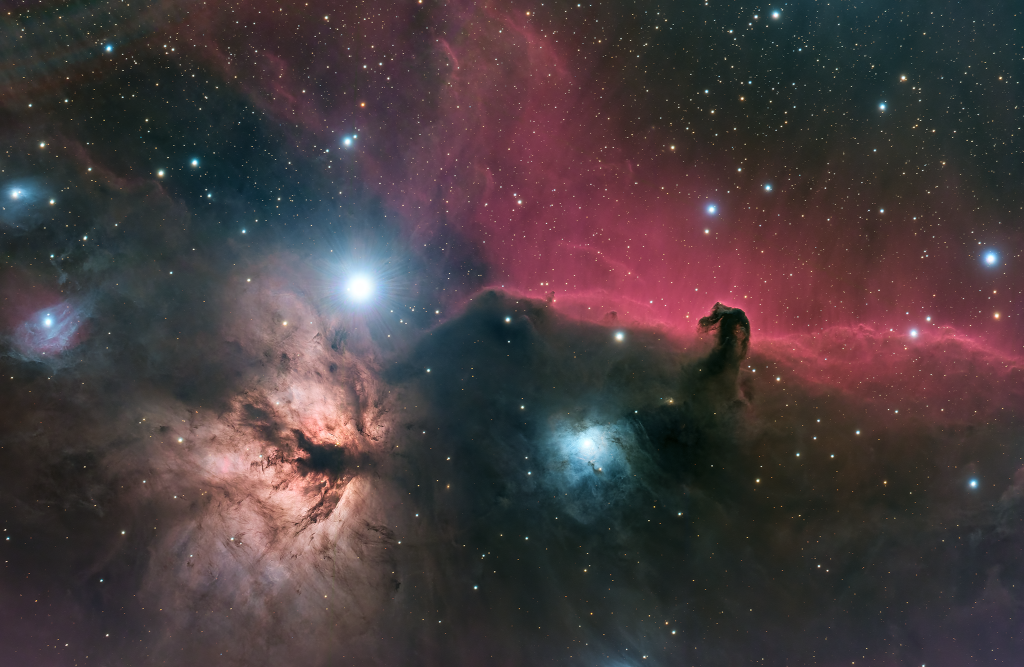2022年12月29日
Horsehead and Flame
Image Credit & Copyright: Jason Close
Explanation: The Horsehead Nebula, famous celestial dark marking also known as Barnard 33, is notched against a background glow of emission nebulae in this sharp cosmic skyscape. About five light-years “tall” the Horsehead lies some 1,500 light-years away in the constellation of Orion. Within the region’s fertile molecular cloud complex, the expanse of obscuring dust has a recognizable shape only by chance from our perspective in the Milky Way though. Orion’s easternmost belt star, bright Alnitak, is to the left of center. Energetic ultraviolet light from Alnitak powers the glow of dusty NGC 2024, the Flame Nebula, just below it. Completing a study in cosmic contrasts, bluish reflection nebula NGC 2023 is below the Horsehead itself. This well-framed telescopic field spans about 3 full moons on the sky.
Tomorrow’s picture: pixels in space
马头与火焰星云
图像提供与版权: Jason Close
说明: 在这幅清晰星空图像里,明亮背景发射星云上的黝黑暗斑,是亦名为巴纳德33的著名马头星云。位于猎户座方向约1,500光年远处的马头星云,高度在5光年左右。在此区富饶分子云复合体内的这大片不透光尘埃,从银河系我们所在的位置看出去,恰好拥有我们很熟悉的形状。图像中左方的亮星,则是猎户腰带最东侧的参宿一。来自参宿一的高能紫外光,更激发其下方满是尘埃的NGC 2024(火焰星云)发出明亮的辉光。完善这个色泽对比示例的天体,还有马头星云下方的泛蓝反射星云NGC 2023。这片取景佳妙的望远镜视野,大约涵盖了3个满月宽度的天区。
明日的图片: pixels in space







